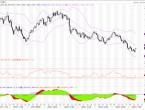EUR/USD
1.15839
-0.067%
Gold
4039.30
-0.156%
Oil
59.944
0.490%
USD/JPY
155.429
0.108%
GBP/USD
1.31377
-0.119%
GBP/JPY
204.201
-0.001%
Network monitoring website DownDetector reports that Cloudflare in the United States is experiencing issues, according to user reports.Ukrainian President Zelensky: Agreements will be reached with 13 Spanish defense companies.Preliminary plans indicate that Angola will reduce its crude oil exports to 933,000 barrels per day in January.Steffier: Raised his target price for Nvidia (NVDA.O) from $212 to $250.On November 18th, BOSS Zhipin (02076.HK) announced that its operating profit for the third quarter of 2025 was RMB 687 million (US$96.5 million), an increase of 108.1% compared to RMB 330 million in the same quarter of 2024. Net profit for the third quarter of 2025 was RMB 775 million (US$109 million), an increase of 67.2% compared to RMB 464 million in the same quarter of 2024. The total number of paying enterprise customers for the twelve months ended September 30, 2025 was 6.8 million, an increase of 13.3% compared to 6 million for the twelve months ended September 30, 2024. The average monthly active users for the third quarter of 2025 were 63.8 million, an increase of 10.0% compared to 58 million in the same quarter of 2024.











